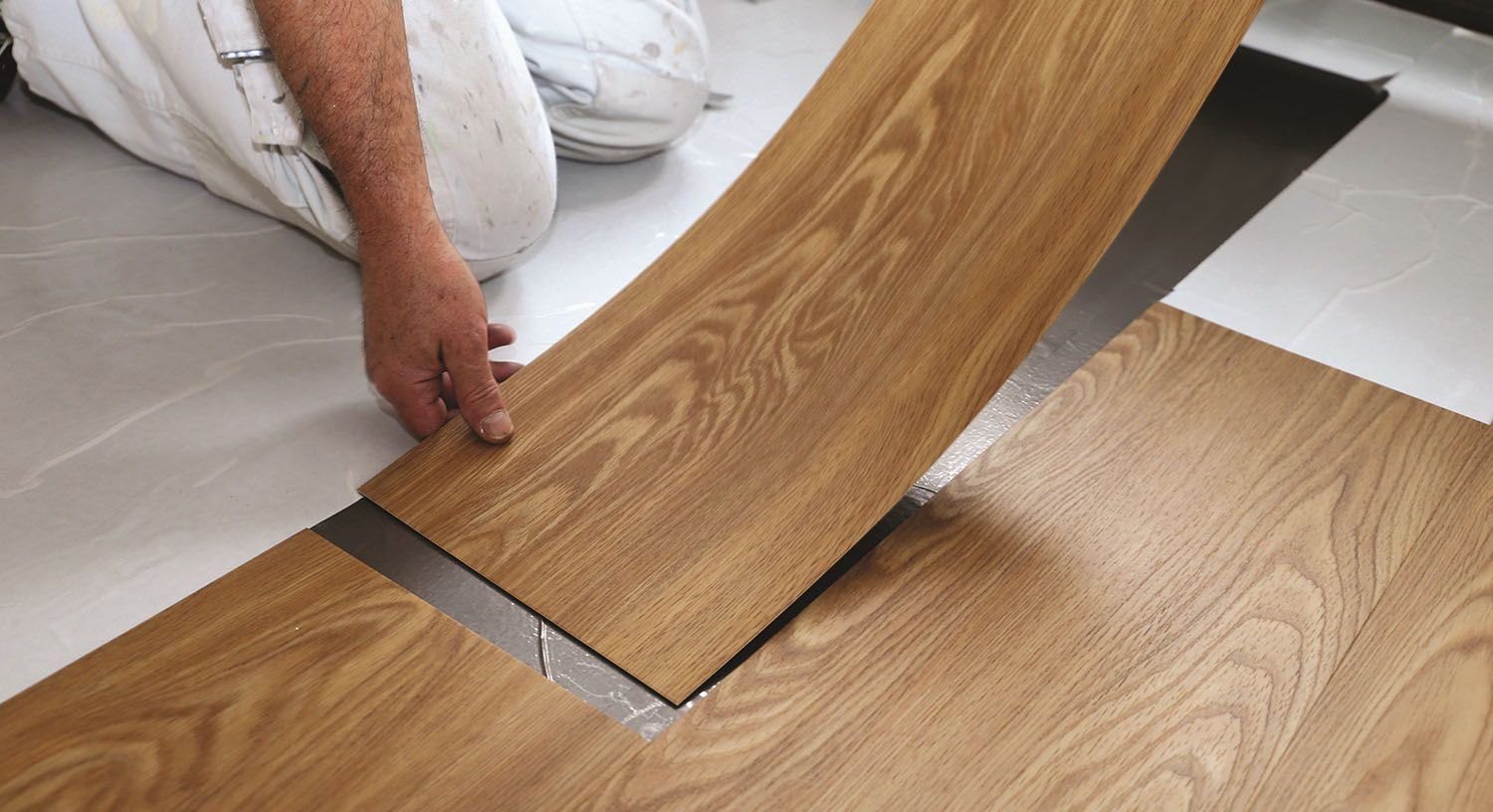
Check the room dimension by getting it measured preferably by a professional installer. Use a measuring tape to carefully measure the size of your space where Wonderfloor flooring will be installed. It is important that you get an accurate measurement before placing the order for the material.
• The first and the foremost thing in the preparation of subfloor is to clean the installation site with a stiff-bristled broom to remove all the loose dirt, soil, sand, grease or any other residue from the floor
• Inspect the floor, it needs to be hard, flat “O” levelled and completely smooth. Fill all voids or cracks with an appropriate patching levelling compound for subfloor surface
• In case of undulation on the floor, the application of self-levelling compound is recommended to get the “O” levelled surface. Allow the compound to cure overnight. This will help to provide a smooth under layer, which is vital to having a smooth final application of Wonderfloor flooring.
• The floor should be tested for any residue moisture. The surface of the floor must be completely dried if moisture content is traced.
Wonderfloor sheet must be allowed to relax for 24 hours in room temperature between 20°C and 27°C prior to installation. This will help the sheet to expand or contract and acclimatize to the normal humidity levels and prevent Wonderfloor flooring from coming or tearing later on in the process
Fix coving strip on the corner of the wall. Coving provides a properly shaped coved section to act as a supporting base for coved sheet vinyl flooring
Place the sheet on the subfloor rolling it across the room as per the markings on the subfloor according to the room dimension.
Flip the half of the product over and apply adhesives to the floor and expose some adhesive across the back of the sheet (Pay attention to removing air when attaching the product to the floor). The adhesive should be allowed to dry as per the manufacturer’s guidelines before fixing the flooring sheet by applying pressure evenly on the flooring. Use the same process to place the remaining PVC flooring sheet. If the floor is patterned, make sure the patterns of adjacent floor rolls match. Use the utility knife to cut the pieces on the edge of the floor lengthwise as needed.
It is recommended to use light weight steel roller across the floor to ensure good installation. Recommended adhesives: It is very important to use good quality adhesive manufactured by reputed manufacturers. A cheap and poor-quality unbranded adhesive will not only spoil the installation over longer duration but also affect the life of PVC flooring. Wonderfloor recommends the usage of solvent free water-based adhesives like Fevicol VC31 or Arobond 44.
Heat welding is the process for all seams, coving and corner fill pieces of sheet vinyl. Heat welding provided for strong watertight and hygienic seams. Heat welding should be done after the flooring adhesive has set-up
The installation of wall covering also follows the similar guidelines as that of Vinyl flooring. Besides ensuring that the wall surface is hard, smooth and levelled the following is highly recommended:
• Freshly plastered walls must be dry before application.
• All paint residue should be removed and surface protrusions and low spots sanded and filled so that hanging surface is clean, smooth and thoroughly dry.
• Surface should be thoroughly sealed; a quality wall primer should be used on all surfaces. The surface should be further prepared with white cement based fine powder, popularly now as “wall putty” which provides an ideal base for concrete / cement plastered walls.
• Glossy surface should be sanded to dull the surface and dust removed with a dry cloth.
• Any mildew must be removed from the walls and surface treated to inhibit mildew growth.
Although vinyl flooring does not require special maintenance, it’s life can be further enhanced by the following preventive routine practices:
• The flooring should be cleaned on regular basis
• Use good quality door mats to avoid soiling from outside. This will reduce the dust accumulation and enhance the floor life.
• Use water to remove any chemical spillage on the floor
• Spillage of solvent, oil, grease over a prolonged period could damage or decolorize the floor, hence any spillage should be immediately wiped out.
• Don’t throw lighted cigarette butts or match stick on the floor.
• Scuff marks on the floor can be removed with the application of diesel (acid / harsh chemicals not recommended to clean the floor).
• Dragging of heavy objects should be avoided on the floor.
• Heavy furniture should have castor / rubber pads to avoid indentation marks on the floor.